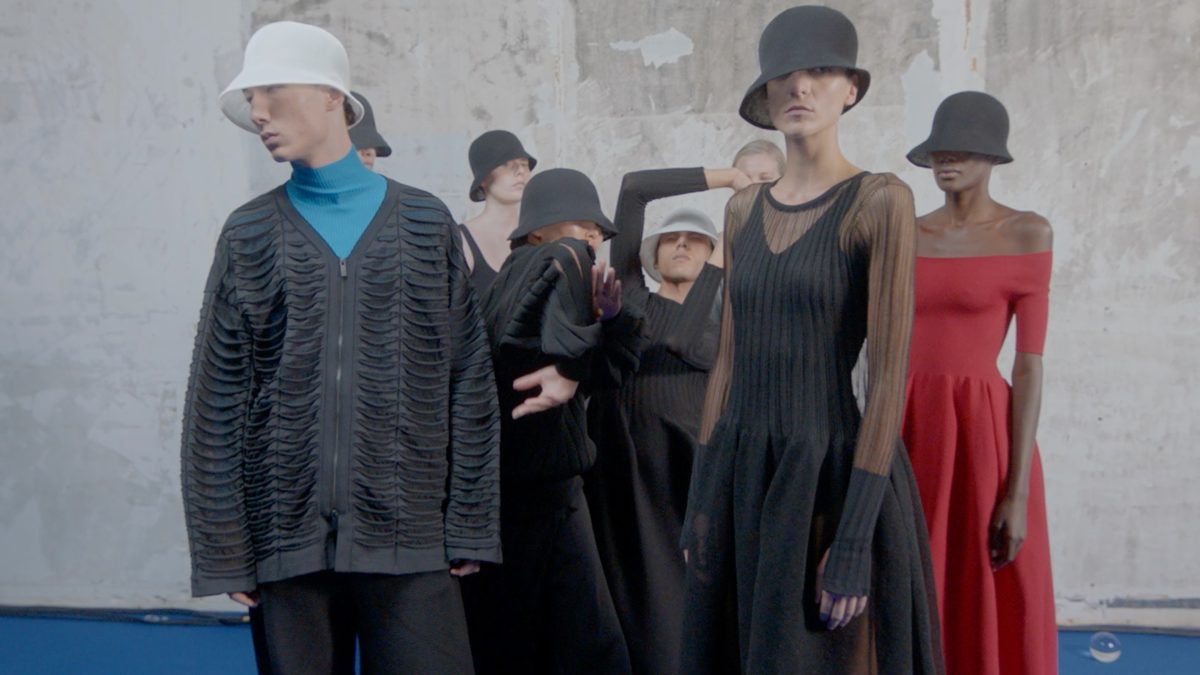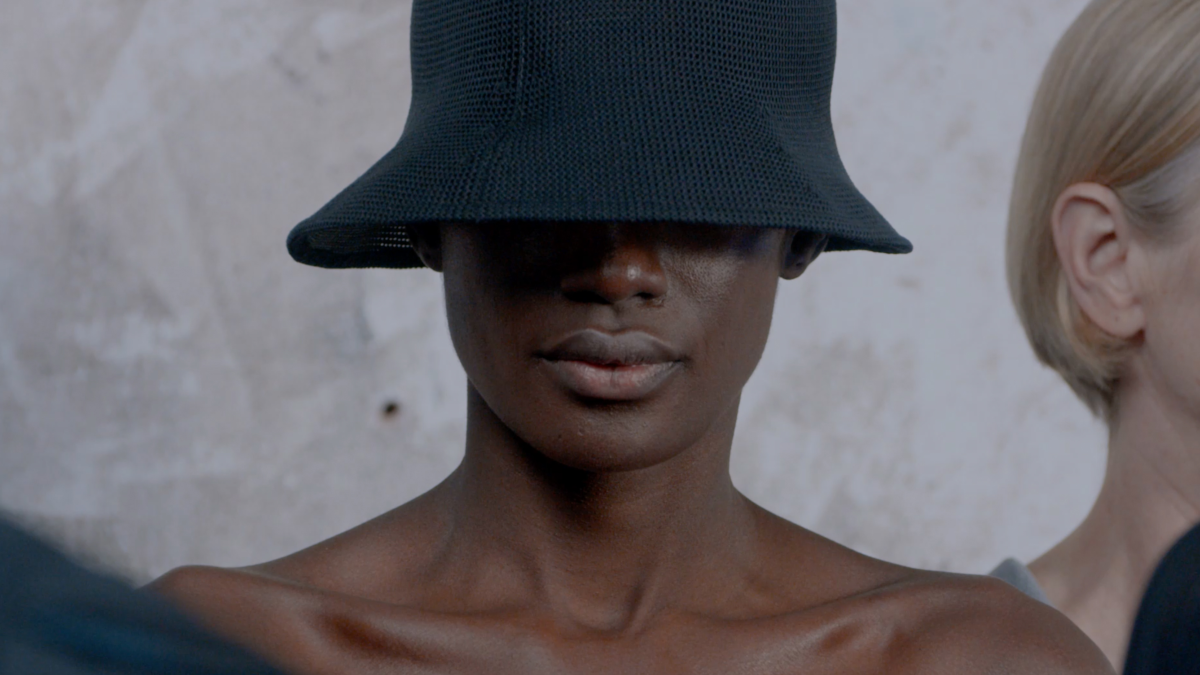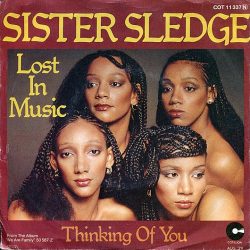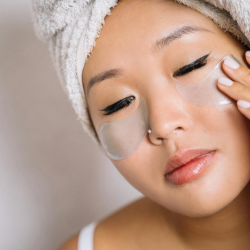Global design-driven creative agency monopo collaborated with fashion brand CFCL to launch a movie capturing the fashion brand’s Paris Fashion Week spring/summer 2023 collection. Shot at the historical Palais de Tokyo, the movie (below) reflects CFCL’s philosophy while showcasing the new collection in a futuristic alternate reality.
With this in mind our Editor Mike Piggott spoke to Berlin-based Asako Tomotani, monopo’s Creative Producer, about ‘the new representation of Japan’, high fashion, Japan’s changing culture and breaking down Japanese stereotypes around exoticism and fetishization.
What does the ‘new representation of Japan’ entail?
I believe that even those who have never visited Japan have more or less an idea of what Japan is. Pokemon, temples, sushi, etc. Maybe for those who have a little deeper understanding it goes into architecture, fashion, and some of our philosophy.

However, I believe that anything Japanese typically takes more time to be translated and reach an international audience simply because of the language barrier. When I call this a simple language barrier, it may sound like an easy obstacle to overcome. But when one’s language is so deeply intertwined with the history, culture, and the thought process, and on top of that being secluded on an island for a long, long time, it is hardly a mere translation matter but that of a deeper interpretation.
For that reason, anything Japanese takes a little more time to be seen and understood in the international market, and vice versa. After keeping in mind how difficult it is for anything Japanese to penetrate and reach the international market, CFCL collection was a fresh breeze into the Japanese representation that existed until now. Why? Because it overturns every aspect of the “exoticism” that has been at the core of the Japan-love and fetishized for so long. And the brand did it without needing any word-to-word explanation. It is the futuristic, tech-driven Japan, while being organic in shape and colours. It is the efficiency of the garments, while being physically inclusive. The future-forward philosophy behind each garment is yet so in tune with nature, I almost felt the Shintoistic thoughts behind it. The very core of us (Japanese). CFCL’s presentation was a new way of showing Japan, without conforming to the stereotypes that are over-represented.
Culturally, how is Japan changing these days?
While it is said that the youth in Japan now is “sleepy”, I feel like in a way, Japan is waking up. The younger generation, women, and minority groups are speaking up louder than ever, publicly questioning the “norm” that has been set from too much back in history.
Even though the societal system is not changing at the same speed, more space is being created for diverse voices in our communities. Social media is a great example. I see and hear so many under-represented voices speaking up on social platforms and people are responding to it, resonating with their importance.

While globally the current youth is called Gen Z, in Japan we also call them the Satori generation. Satori means to be enlightened, meaning this generation has reached enlightenment and has given up on ambition, thinking that it is meaningless even to try and make the change. The two tendencies are contradictory, but it is still true that they both exist. The corrupted society has created the two extremities dividing the youth in two — but I hope that those who are pushing for changes, screaming for it, will be able to bring a bigger impact on the culture, and change the views of the enlightened.
What are you seeing in fashion and wider society?
I moved to Berlin in 2020. It’s only been two years since I moved here but when I went back home in November 2021, I could see how big the influence of K-POP had become. Again! It’s very interesting to live through multiple waves of K-POP influence. When I was in high school it was the first big wave, with a group of girls across classes going crazy for BIGBANG (below), then during the past few years it exploded so much that it became the mainstream style in Japan, to the point I could see it so clearly. From the hair style to make-up, to the things they wear and how they wear them.
It’s interesting how Japanese mainstream fashion / style tends to pursue and imitate the “others”. Our starting point usually is “Japanese are uncool”, therefore we shall aim to be like “the whites (the Americans or the Europeans)”. I’m not sure if we can call this shift to ‘longing to become Korean’ progress, considering that we are finally accepting being Asian, to a certain extent — but there’s still definitely some sort of exoticism that comes with it, that the youth idealise.
Speaking of high fashion…
There are many Japanese designer brands that are loved and admired worldwide. Yohji Yamamoto, Rei Kawakubo, Junya Watanabe, and of course Issey Miyake. They are the previous generation which established a solid ground for Japanese fashion, and CFCL’s Creative Director and designer Yusuke Takahashi himself used to design Issey Miyake’s men’s line for years. I felt the true craftsmanship being passed down and expressed in a whole new way. While some of the philosophies are perhaps still living in their garments, what I found strikingly different is the playfulness. The freedom of expression in the shape — you can still see with Issey’s collections but with CFCL it is even more detached from the human body all the while being an amazing knitwear to fully hug the body.

Like I mentioned before, their expression is so unique in shape and striking in colours, but somehow never loud in the disruptive sense, because they are both so organic. The harmonious mixture with the nature that CFCL brings is something that I truly think is special.
Lastly, I think in general, Japanese people are dressed in more relaxed flowing garments nowadays. I feel like that is the shape of the modern Japanese person. You can see it in Omotesando, Shibuya, Harajuku, pretty much everywhere in Tokyo because in Tokyo, trends spread like magic. So, who knows what the next shape, trend or colour would look like, but at least it will be very visible!
































